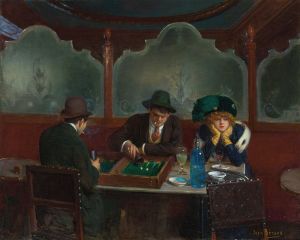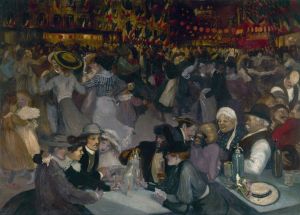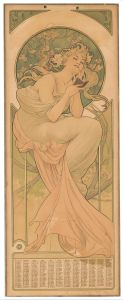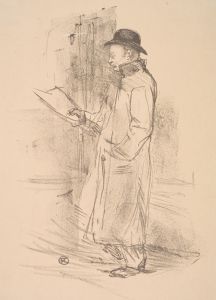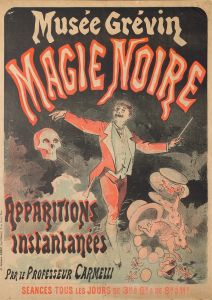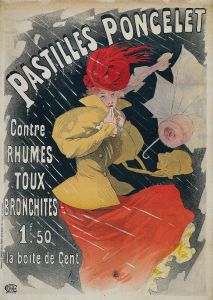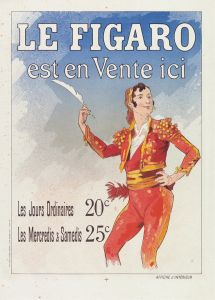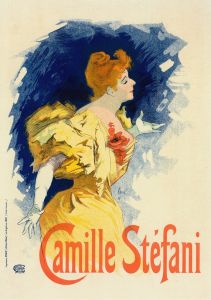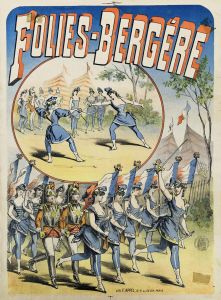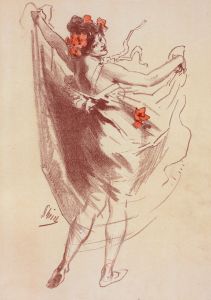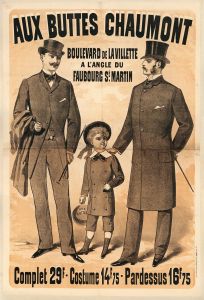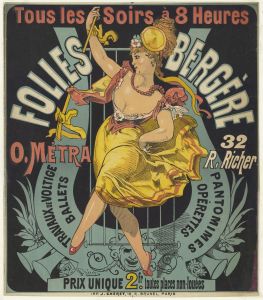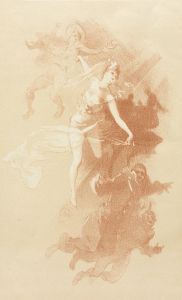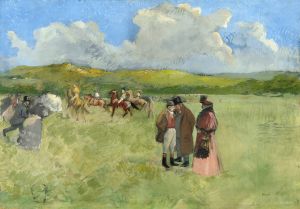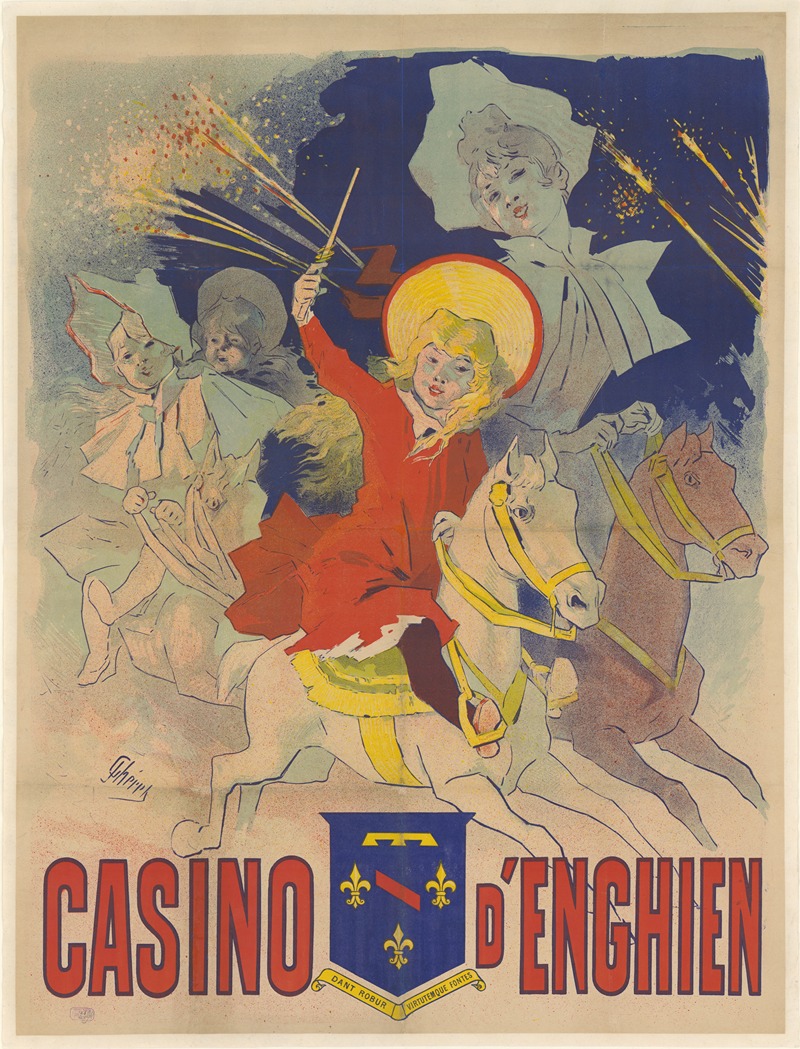
Casino d’Enghien
A hand-painted replica of Jules Chéret’s masterpiece Casino d’Enghien, meticulously crafted by professional artists to capture the true essence of the original. Each piece is created with museum-quality canvas and rare mineral pigments, carefully painted by experienced artists with delicate brushstrokes and rich, layered colors to perfectly recreate the texture of the original artwork. Unlike machine-printed reproductions, this hand-painted version brings the painting to life, infused with the artist’s emotions and skill in every stroke. Whether for personal collection or home decoration, it instantly elevates the artistic atmosphere of any space.
Jules Chéret, a French painter and lithographer, is often referred to as the father of the modern poster. One of his notable works is "Casino d’Enghien," a vibrant and captivating poster created in the late 19th century. Chéret's work played a significant role in the development of advertising art, and "Casino d’Enghien" is a prime example of his innovative approach to poster design.
"Casino d’Enghien" was created to promote the Casino d’Enghien-les-Bains, a popular entertainment venue located in the town of Enghien-les-Bains, just north of Paris. The casino was known for its luxurious atmosphere and diverse range of attractions, including gambling, theater performances, and concerts. Chéret's poster captures the lively and festive spirit of the casino, enticing potential visitors with its dynamic composition and vibrant colors.
The poster features a central female figure, a common motif in Chéret's work, who is depicted in a joyful and animated pose. She is dressed in a flowing, elegant gown, and her outstretched arms suggest movement and excitement. Surrounding her are smaller figures engaged in various activities, such as dancing and playing musical instruments, which further emphasize the lively atmosphere of the casino. The background is filled with bright, swirling patterns and bold colors, creating a sense of energy and celebration.
Chéret's use of color and composition in "Casino d’Enghien" is particularly noteworthy. He employed a technique known as chromolithography, which allowed for the production of posters with rich, vibrant colors. This method involved printing each color separately from a different stone or plate, resulting in a final image that was both visually striking and durable. Chéret's mastery of this technique is evident in the poster's vivid hues and intricate details.
In addition to its aesthetic appeal, "Casino d’Enghien" is also significant for its role in the evolution of advertising. During the late 19th century, posters became an increasingly important medium for promoting events, products, and services. Chéret's work helped to elevate the status of the poster from mere advertisement to a respected form of art. His innovative designs and artistic approach influenced a generation of artists and set new standards for commercial art.
Jules Chéret's "Casino d’Enghien" remains an important piece of art history, reflecting both the cultural vibrancy of the Belle Époque era and the evolution of advertising art. The poster is a testament to Chéret's skill as an artist and his ability to capture the essence of an experience in a single, compelling image. Today, his work continues to be celebrated for its artistic merit and historical significance, and "Casino d’Enghien" stands as a prime example of his enduring legacy.





